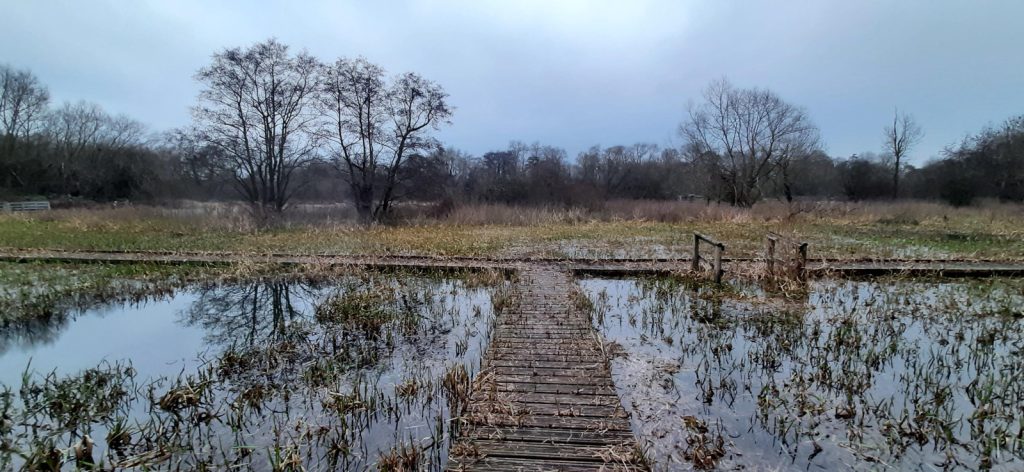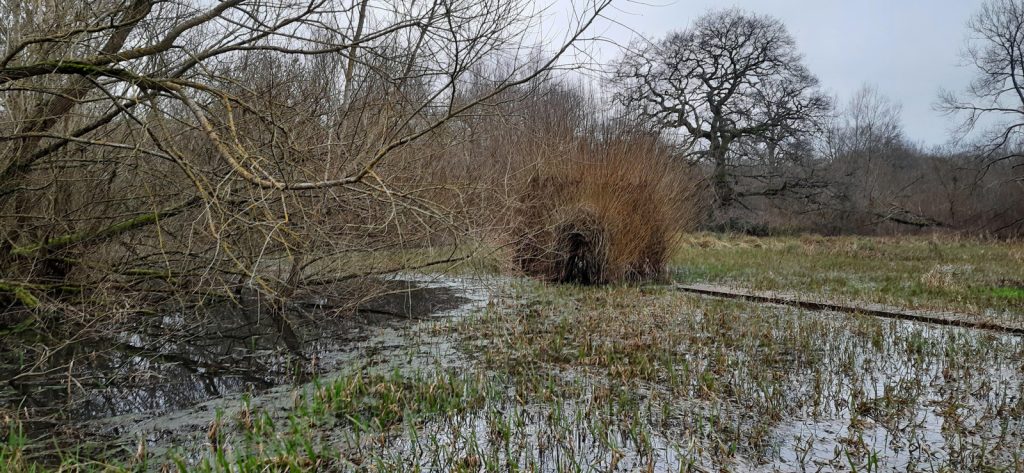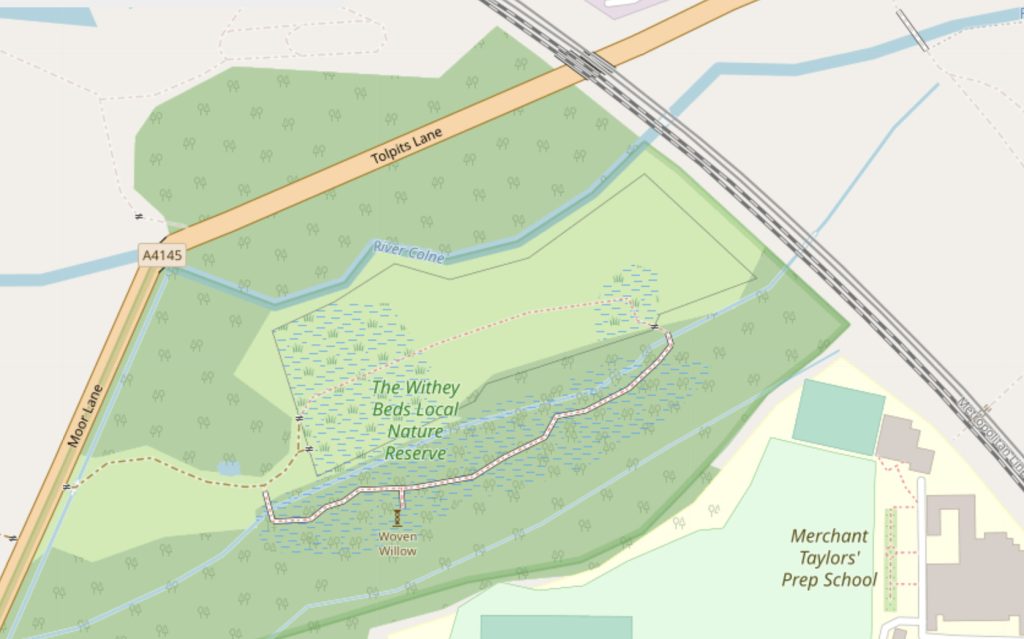
A short visit to a local nature reserve between Moor Park and Watford, just north-west of London, proved an unexpected atmospheric delight, as can be seen from these photos, taken just before sunset in mid-winter, after a number of days of rain. The Withey Beds (named after withys, which are willow stems) is a relatively undisturbed area of wetlands, and so the main field was partially underwater and inaccessible, but the ~300m boardwalk that runs through the south of the site was just below the waterline.

The boardwalk is extremely atmospheric, particularly with the spooky submerged forest all around, and is in good condition so is an easy walk.

There is a curiosity early on the boardwalk – what looks like a simple clump of vegetation, is actually a woven willow feature, created by a local artist, which includes a tunnel – not accessible at all during the waterlogged season, but visible from a short dead-end section of boardwalk, just off the main route.

Fauna included a number of sheep in the main field, staring at me from a slightly raised (and so not submerged) section, a couple of ring necked parakeets that were enjoying unharvested apples from a wild apple tree, and most excitingly of all a Muntjac deer which lurked in the wooded section near the entrance to the reserve, before scampering off.

Access to The Withey Beds is very poor, there is only one entrance, and it is off a busy road (Moor Lane/Tolpits Lane) with no pavement. There is also no car park, although there is a tiny layby on the other side of the road a bit further down, for a couple of cars. The reserve is about a 15 minute walk north-west from Moor Park underground station, through the eponymous private estate and then around 200m on the busy road. Walking from the north, via Croxley station, Croxley Common Moor, the Ebury Way rail trail and Tolpits Lane, is not recommended, due to a long and unpleasant pavement-free section along Tolpits Lane.

It is difficult to see how this could be remedied without considerable expense – a pavement would be the obvious fix (and there is space on the far side of the road) plus an informal crossing near the entrance itself. An eastern entrance, making use of a bridge across the River Colne and an old tunnel underneath the railway, also looks feasible, but would require the blessing of Merchant Taylors School and Prep School, whose sites are on either side of the line.

There is however something to be said for the current, difficult access. You are very unlikely to bump into anyone else in the reserve, and so you can have all the flora and fauna to yourself.
